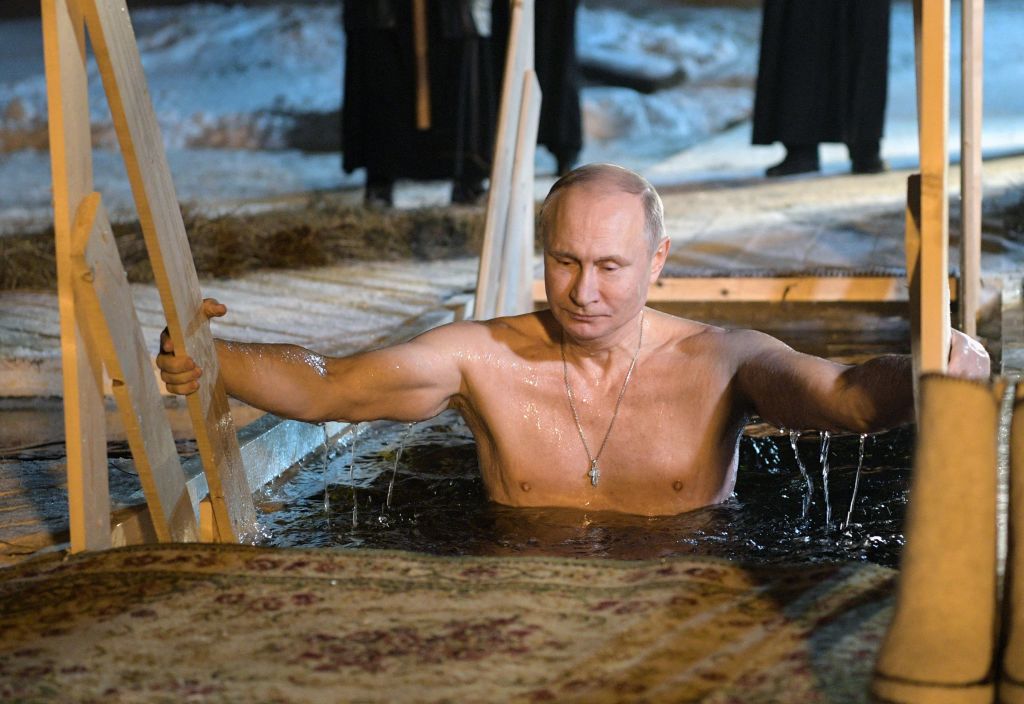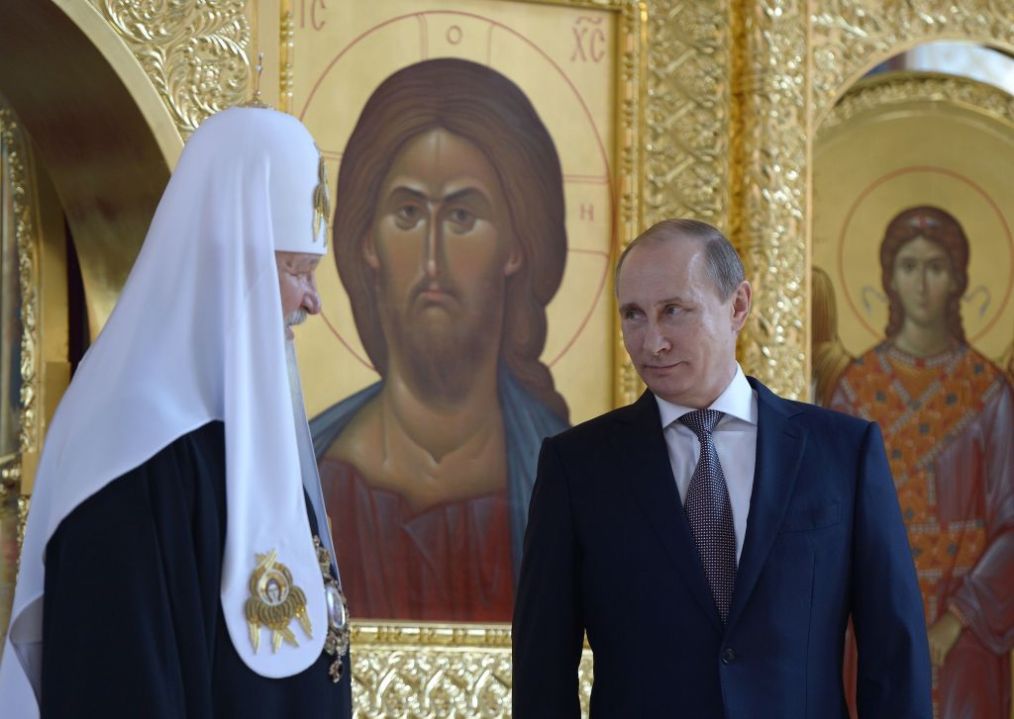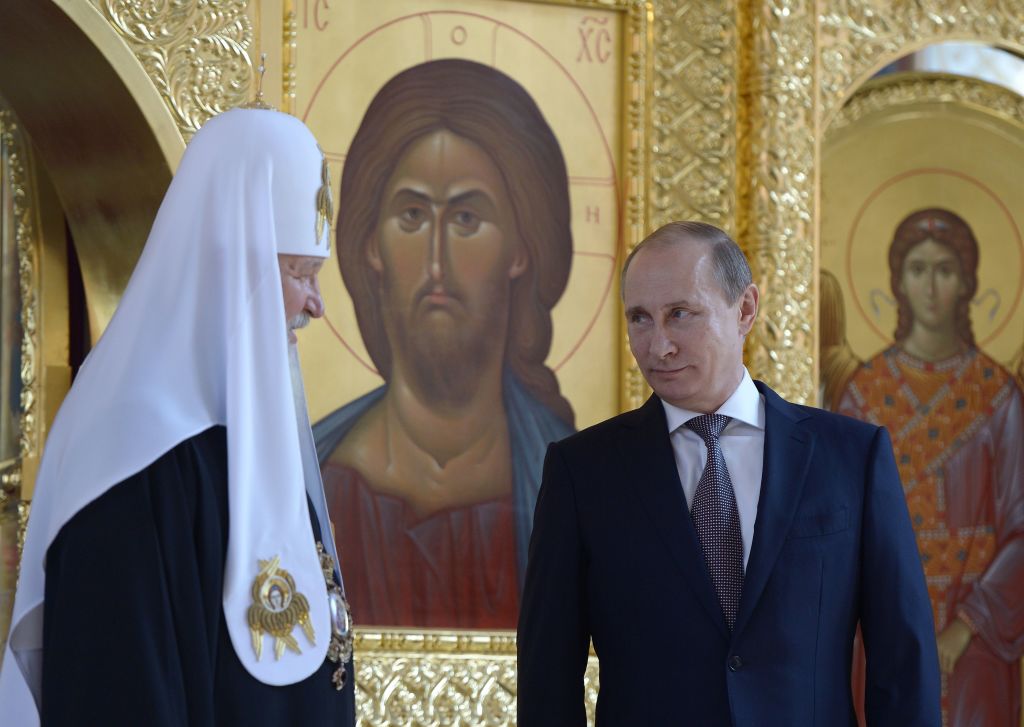Travel the length and breadth of Russia – as you could fairly easily before the outbreak of war last February – and you will find, in many cities, a museum called Russia: My History. These institutions have a clear message for visitors. Empire-building luminaries like Ivan the Terrible and the despots Nicholas I and Alexander III are depicted as heroes. Vladimir Putin is also exalted. The territorial gains strong rulers can achieve are something to celebrate, as is the state religion they aggressively propagate. But what many visitors don’t know about these modern-day monuments to expansionism is the hidden hand that helped curate them: the Russian Orthodox church.
Orthodox patriarch Metropolitan Tikhon, a close friend to Putin and rumoured to be his spiritual confessor, partly oversaw the organisation of these state historical museums. In most countries, the Christian church exists to win souls for Christ. But in Russia, the established church has an additional motive: to endorse Putin.
In the early days of the Russian invasion of Ukraine, Tikhon acted as apologist, assuring parishioners that ‘if (Putin) had not done it now but later, Russia would have been attacked, with the risk of having millions of victims.’
As Russian bombs battered civilians in Aleppo in 2015, Kirill declared the Russian action a ‘fight with terrorism’
In this troubling marriage between church and war-machine, Tikhon is far from alone. On 23 February, the eve of the invasion, Metropolitan Kirill, Patriarch of Moscow and effective head of the Russian Orthodox church, congratulated the Russian military for the ‘very correct path’ they had chosen in life. The following month, in Moscow’s Cathedral of Christ the Saviour, he presented an icon to the head of Russia’s National Guard – about to go into battle – in the hope it would ‘inspire new recruits taking their oath’.
A few months later, he was at it again. After the ‘partial mobilisation’ on 21 September, Kirill assured recruits that death in battle ‘washes away all the sins that a person has committed.’ Rarely has the spectacle of a religious leader putting himself at the service of a violent military campaign been quite so unambiguous. Though 150 Orthodox priests signed an open letter against the war in March, none came from the church’s upper reaches, and the abiding impression has been one of lockstep. As a Russian friend put it wearily: ‘It’s a long way from the Sermon on the Mount’.
What does the Russian Orthodox church want from Putin’s war? For Kirill, the answer is straightforward: it is a Holy Mission to repel the corrupting influence of Western liberalism, and to unite the entire region’s Orthodox believers – despite the Ukrainian Orthodox church breaking away in 2018 – into one enfolding ‘Russian world’.

This disdain for Western culture is something Kirill – who has spoken at length of the war as a ‘metaphysical’ crusade against Pride parades and same-sex marriage – shares with Putin. The dream of ever-strengthening unity between the Orthodox’s flock at home and abroad is another reason why the church is on such good terms with Putin. Russia’s leader is seen as the man who can help bring this about.
Yet there can be little doubt that this alliance of church and state has a darker side: this is a bond that has helped lay the groundwork for the invasion of Ukraine. The symbiosis between the two goes back to the earliest years of Putin’s rule. Since then, a compact appears to have emerged: while the church has lent moral credibility to Putin’s government, Putin has made the church the centrepiece of a Russian ‘spiritual renewal’ and the cornerstone of his domestic – and latterly, tragically, foreign – policy. In 2004, all church property seized during the Soviet era was returned by law, making the Orthodox church one of the largest landowners in Russia. State-owned energy firms were obliged to contribute to the restoration of old churches and the construction of new ones, 25,000 being built or rebuilt since the 1990s. Orthodox religious teaching was reinstated in state schools, and the existence of competing religious groups virtually banned. Meanwhile, the Patriarch looked on approvingly as Putin’s 2013 ruling made promoting homosexuality in schools illegal, followed by the recent draconian legislation to make even referring uncritically to LGBT issues in public an offence.
Putin’s conversion from former KGB-man to religious banner-bearer seems complete. He visited Mount Athos in 2016 (effectively, Orthodoxy’s Mecca) and, to celebrate the epiphany in 2021, ritually immersed himself in icy waters near Moscow – an Orthodox tradition for its most diehard adherents.
Whether this is the stuff of genuine belief or photo-opportunity is a matter between Putin and Tikhon, his confessor. But the Russian Orthodox church has amply rewarded Putin. Kirill spoke of Putin as a ‘miracle of God’ and vigorously campaigned for him before his controversial return to the presidency in 2012, urging the Russian public ‘to make a choice that will lead to…the glory of God reflected in people’s faith, their lives and the glory of our Fatherland.’
As Russian bombs battered civilians in Aleppo in 2015, Kirill declared the Russian action a ‘fight with terrorism’ and a ‘holy battle.’ Military chaplains, revived in 2009, blessed tanks and missiles – although, as Mark Galeotti tells us, ‘the church drew the line at camouflage cassocks.’
Perhaps the apotheosis of this grotesque marriage between church and military-machine – before it went on full activation, as it were, in February 2022 – took place in 2020, with the opening of the Cathedral of the Armed Forces in Russia’s Patriot park near Moscow. Costing a reputed £73.5m, the Cathedral is a tribute to Russian military might, featuring mosaic-scenes of Russian ‘victories’, including Georgia in 2008, the ‘fight against international terrorism’ in Syria, and the annexation of the Crimea in 2014, with the legend ‘Crimea is Ours’.
Another Crimea-related mosaic depicting Putin, current FSB director Aleksandr Bortnikov and defence minister Sergei Shoigu was taken down before the museum’s opening. Putin’s spokesman Peskov explained that:
‘When he heard the report, (Putin) smiled and said: ‘One day our grateful descendants will appreciate what we did, but it is too early to do this now.’’
Such absurdities aside, few things make clearer than the Cathedral of the Armed Forces the path to war that, two years ago, church and government inexorably and inseparably embarked on together.
It’s been said since the beginning of the war that Russia is sufficiently mighty, robust, cultured and pluralistic to survive the ignominy and destruction into which the Putin government have led it. Likewise, the Russian Orthodox church is strong enough, various enough, rooted enough – indeed beautiful enough – to weather out the storm of its temporary, misgoverning occupying power. Those with any experience of the Orthodox church know its peculiar magic: the candles, the icons, the shadows, the chants, the feasting and fasts, the sense of other worlds beyond this one which it so powerfully communicates. Yet in the meantime, while Putin’s war drags on and the church remains silent, the question begs itself: what is the point of such transcendent, transporting beauty, when it cravenly lends itself to such ugly human purposes?







Comments